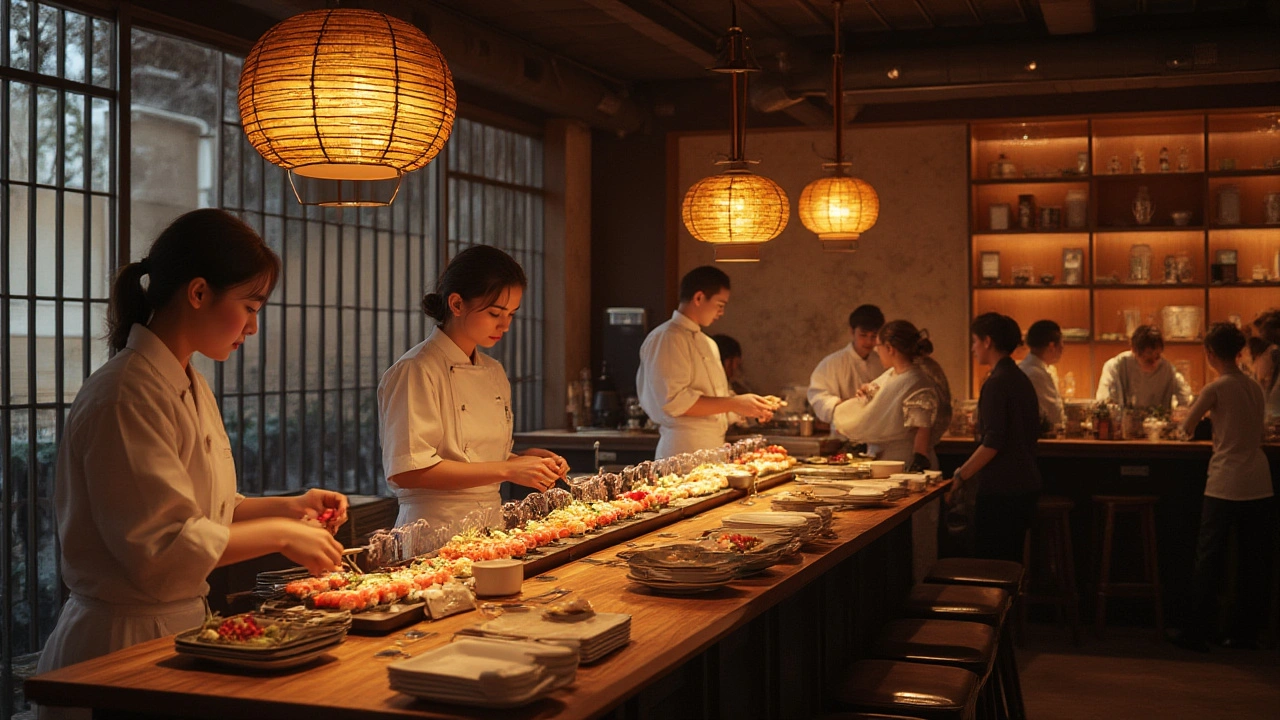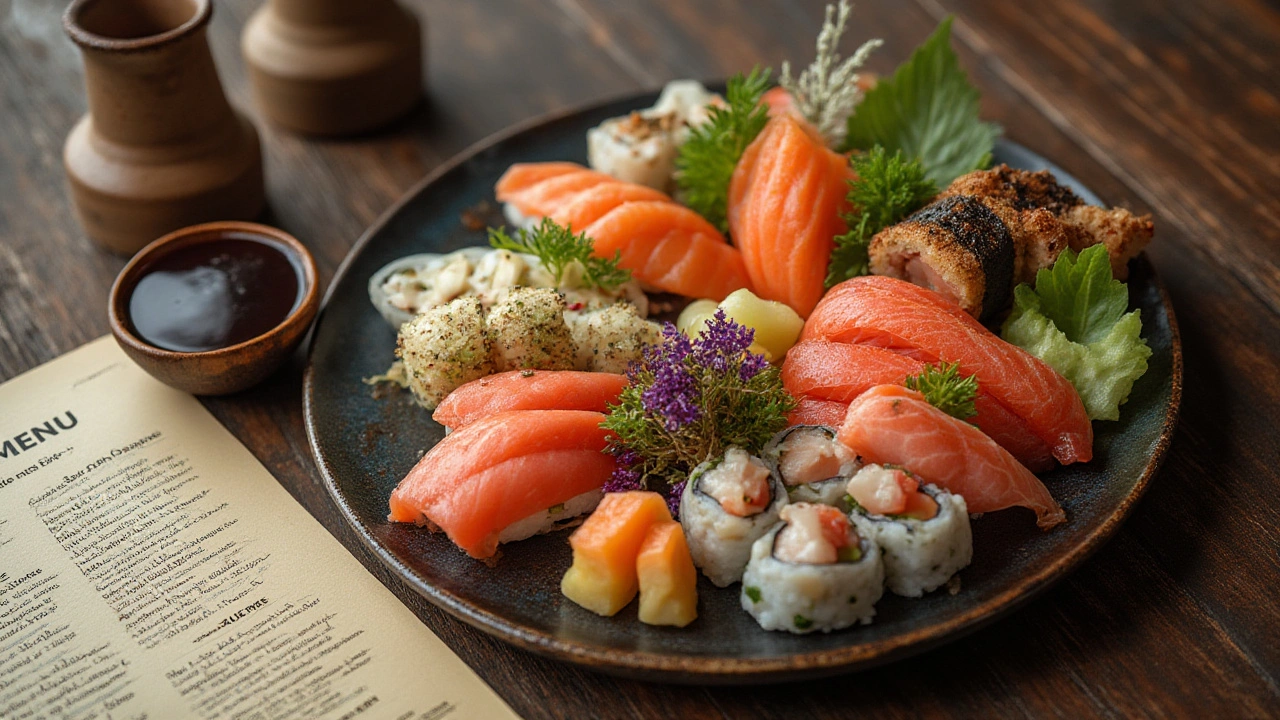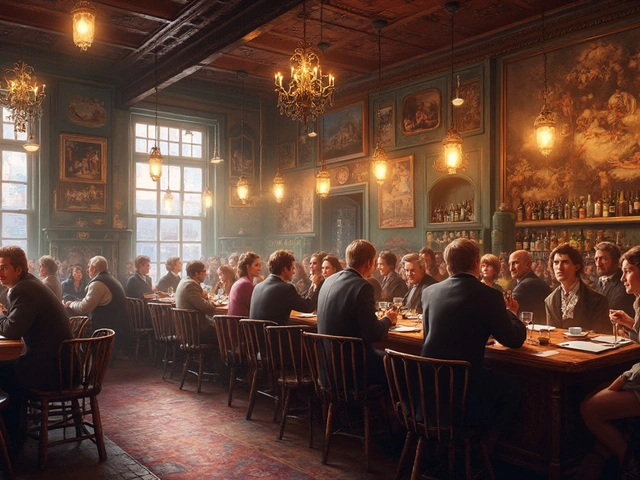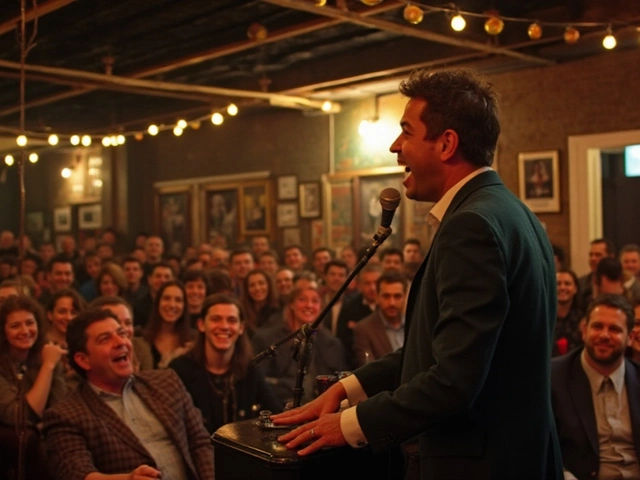
Standing at the counter as a chef crafts nigiri right in front of you—now that’s a food experience. Sushi in London has leveled up big time since the days when it was all supermarket plastic trays. These days, you’ll find master chefs flown in from Tokyo carving up bluefin, hardcore omakase spots tucked behind unmarked doors, and queues of hungry folks braving the drizzle for uni that’s flown in every morning. London doesn’t play when it comes to sushi, and neither should you.
Key Points
- London’s top sushi spots range from traditional omakase counters to creative fusion restaurants.
- For authentic Japanese food, look for places with seasonal menus and direct sourcing from Japan.
- Reservations are essential at sought-after spots, and omakase experiences can be pricey but unforgettable.
- Not all sushi in London is created equal—insider tips help you avoid tourist traps.
- Weekdays often mean quieter dining, more attentive service, and access to rare specials.
Direct Answer
London’s best Japanese restaurants for sushi aficionados include Sushi Tetsu, The Araki, Dinings SW3, Umu, and Sushi Atelier. Each delivers a different vibe, from hyper-traditional omakase to creative modern twists. For the most authentic sushi experiences, go for counter-seating and ask for the day’s chef specials. Book ahead, expect to pay for quality, and trust the chef if you want to taste sushi at its best in London.
Comprehensive Guide to Sushi in London
Ever get tired of soggy sushi rice and wilted nori? London has wised up—you can thank the waves of Japanese expats, adventurous chefs, and food-crazy locals. London now boasts sushi joints that would impress even the pickiest Tokyo salaryman. Hidden among the city’s loud ramen bars and grill houses, top spots like Sushi Tetsu (with only seven seats!) have the kind of reverence for craft that turns a simple slice of yellowtail into a tiny miracle. Then there’s The Araki, famous for its impossibly exclusive 11-seat bar and three Michelin stars. It’s London’s slowest, most thoughtful sushi, served like a small theatre performance.
Don’t skip Dinings SW3 if you crave creative flair—think truffle, wagyu, or house-cured salmon layered in unexpected ways. Over in Mayfair, Umu blends tradition with the sleekest décor, offering not just sushi but the kaiseki dining experience (so, multiple courses focusing on seasonal ingredients, very zen). Even if a $300 omakase is out of reach, places like Sushi Atelier hand over show-stopping platters for under £30. Want something off the beaten path? Check out Kanada-Ya for ‘aburi’ (seared sushi), or jump into Taro Soho where locals grab quick maki after work.
If you value that moment when wasabi hits just right and the rice melts, follow the buzz but look past the hype. True sushi gems in London don’t always flaunt themselves—they’re often little more than a sign in Japanese and a line of quiet regulars. For the smart eater: go for lunch menus to get omakase at a friendlier price, or hit places like Sticks ‘n’ Sushi for a spread that pleases those who want a bit of everything. Whether you love delicate nigiri or brash fusion rolls, London’s scene rewards those willing to explore.
Definition and Context: What Makes a Top Japanese Sushi Restaurant in London?
If you’re thinking, “Sushi is just raw fish, right?”—well, no. Authentic sushi is about the rice, the cut, the technique, and, most of all, the ingredients. In Japan, there’s a saying: “Sushi is like a handshake. If the balance isn’t right, you’ll know immediately.” Restaurants that sweat the details—think hand-crafted vinegar for the rice, Shizuoka wasabi, line-caught fish, and chefs who spend years learning to slice—those are the ones that matter in London’s scene.
So what’s the deal with omakase? Omakase means “I’ll leave it up to you” and hands control to the sushi chef. Expect the freshest catch, artistic plating, and a lineup that changes daily. London’s elite Japanese restaurants like Sushi Tetsu and The Araki specialize in this, serving up fewer than fifteen diners a night. It’s intimate, theatrical, and you have to trust the chef. Not into handing over your dinner plans? No stress—many of the top spots have extensive à la carte and set lunch menus, often at a much better value.
London’s Japanese dining explosion kicked off in the 1980s, but the sushi bar boom really fired up once British palates outgrew California rolls and started asking about uni and otoro. The recent chef migration from Tokyo has only upped the game—some London counters are now importing fish directly from Tsukiji (Toyosu) Market for that unmatchable taste. No wonder one in every ten Japanese restaurants in London specializes in sushi. So, if you want the kind of sushi that makes even a rainy Tuesday feel like an event, you’ve come to the right city.
Benefits of Exploring London’s Best Sushi Spots
Sushi can make you slow down, notice flavors, and appreciate the craft—kind of like visiting an art gallery, but you get to eat the paintings. At London’s top Japanese restaurants, you get a front-row seat to skills honed over decades. Some places will surprise you: The Araki’s chef is actually a sushi chef legend who moved from Tokyo to London purely for the challenge. He serves every single piece of nigiri by hand to each guest, ensuring perfect temperature and texture.
Beyond the drama, the payoff is in the taste. The best restaurants work with sustainable fishmongers, fly in fresh uni from Hokkaido, and even source rice from special regions in Japan. That means buttery-tender mackerel, delicate sweet ebi, or tuna that’s so rich you’ll wonder if you ever really tasted tuna before. And for people worried about raw fish—yes, there’s plenty of cooked sushi, plus crisp tempura, robust miso, or creative vegan rolls for every taste.
There’s also a sense of escapism. Book a window seat at Dinings SW3, and you’ll spot A-listers enjoying ‘aburi’ sushi and rare sakes. Hit Koya Bar or Kanada-Ya, and you’ll hear Japanese spoken among both staff and regulars—clear signs of authenticity. Go as a pair, and you’ll probably get some insider extras (seriously, it pays to be nice to the chef). Plus, nothing cures a London chill like salty miso, warm rice, and a matcha mochi to finish it all off. Unbeatable, in my book.
Types of Japanese Sushi Restaurants in London
Not all sushi restaurants are cut from the same nori. London’s best include classic omakase counters, high-energy izakaya joints, and sleek fusion spots for adventurous eaters. The purest form is the traditional omakase counter—usually less than a dozen seats, reservations-only, and little English spoken. Here, the chef sets the pace, deciding exactly what you eat, when. Think Sushi Tetsu: tiny, unassuming, and booked up months in advance. Expect precision, silence, and a chef who watches you taste every bite.
Then, there’s modern Japanese. These places fuse classic sushi with British or European ingredients, turning out rolls with truffle, wagyu beef, or even foie gras. Dinings SW3 and Zuma are top of this game—the kind of places you go for great people-watching as much as jaw-dropping flavors. If you want more drinking and less ceremony, izakaya-style joints like Koya Bar or Sake No Hana let you sample everything from maki and tempura to charred skewers and sake flights. Here, food comes fast, service is casual, and prices are friendlier.
| Type | Atmosphere | Best For | Example |
|---|---|---|---|
| Traditional Omakase | Intimate, quiet, chef-led | Purists, food nerds, date night | Sushi Tetsu, The Araki |
| Modern Japanese | Sleek, buzzy, fusion | Group outings, adventurous eaters | Dinings SW3, Zuma |
| Izakaya & Casual | Lively, informal, quick turnover | Bargain hunters, solo diners | Koya Bar, Kanada-Ya |
| Family-Friendly Chains | Bright, energetic, kid-friendly | Families, large groups | YO! Sushi, Sticks ‘n’ Sushi |
It’s a choose-your-own-adventure, and you don’t need Michelin money to get started—many of the city’s best chefs do affordable set lunches or takeaway for the sushi-curious.

How to Find the Best Sushi Restaurants in London
Sifting through London’s sushi scene isn’t just about skipping tourist traps. If you’re after the good stuff, start with word of mouth—local Japanese folks are excellent guides. Look for signs of freshness: slim menus that change daily, sushi counters in clear view, and chefs prepping ingredients to order. Trust busy spots; a bustling line at dinner is usually a good sign. Check out apps like OpenTable for reservations or Google Reviews for up-to-date feedback. Don’t ignore social media—chefs love to post daily specials and rare finds on Instagram.
Want to geek out? London’s leading sushi places often display certificates of fish origin, photos from Tsukiji Market, or even host seasonal events (like bluefin tastings or sake pairings). For a safe bet, these five will not let you down:
- London sushi star: Sushi Tetsu—tiny, serious about sushi, famously hard to get in but worth every effort.
- The Araki—not just a sushi bar, but a theatre where the chef is the star. Show up early (if you can get a seat at all).
- Dinings SW3—creative, ingredient-obsessed, always rotating special menus.
- Umu—flashy Mayfair digs, classic kaiseki as well as sushi, great for celebrating.
- Sushi Atelier—midrange prices, open plan, great for groups or solo adventurers.
Want a visual for where to start? Here’s a simple table for your London sushi hunt:
| Restaurant | Experience | Average Price Per Head |
|---|---|---|
| Sushi Tetsu | Omakase, 7 seats, chef-led | £120-£200 |
| The Araki | Omakase, Michelin-starred | £300+ |
| Dinings SW3 | Creative fusion, modern | £80-£150 |
| Umu | Kaiseki and sushi, glamorous | £200-£300 |
| Sushi Atelier | Casual, open kitchen | £30-£60 |
Weekday lunchtimes are the city’s best-kept sushi secret—less busy, specials on the menu, and you’ll probably snag more attention from the chef.
Pro Tips for Ordering and the Chef Experience
If you want the real deal at a Japanese restaurant, sit at the bar or counter—bonus points for chatting to the chef (even just to say thanks or ask their favorites of the day). Start light: classic nigiri, sashimi, then maybe roll into hand rolls and specials. Listen for the buzz about seasonals; in winter, you might score snow crab, while autumn brings fatty toro or chestnut-filled maki. Always eat sushi from lightest to richest flavors—that’s how the chefs do it back in Japan.
Ever wonder if it matters whether you use chopsticks or your hands? Use your hands if you want—many old-school chefs prefer it for nigiri, and it shows respect for their craft. Don’t drown your plate in soy sauce (the chef’s already seasoned it), skip the wasabi if it’s already there, and—this is big—eat your sushi in one bite, if you can. The idea is to taste all the elements at once. If you’re at an omakase, try not to ask for extras or changes—that defeats the point of leaving it to the chef.
Need a drink? Sake pairs beautifully with almost everything, but don’t sleep on Japanese craft beers or even a simple green tea. Lastly, ask if there’s an off-menu special or an extra treat for regulars—chefs love rewarding loyal customers, and you might get to try something unforgettable (like house-cured mackerel or a rare sea urchin). Oh, and always book ahead, especially at hot spots—you won’t be getting near a seat at The Araki or Sushi Tetsu without one.
Pricing and How To Book at Top London Sushi Spots
London’s premium sushi isn’t cheap, but there’s a reason. The best spots import fish daily from Japan, use premium rice, and invest in top-level knife skills. For omakase experiences, expect £100 to £300 per head—sometimes more if you chase sake pairings. Casual restaurants and high-quality chains will land you in the £40-£80 range, while quick sushi counters start at about £15-£30 for set meals.
If your budget’s tight but you want a taste of the authentic, hit lunch service. Many omakase spots do a lighter midday menu at a fraction of the evening cost. Don’t forget to factor in service charges (usually 12.5%) and drinks. Booking is a must: use OpenTable, the restaurant’s website, or—if all else fails—call and ask if there’s a waitlist. TikTok and Instagram sometimes reveal last-minute cancellations, so keep your notifications on if you’re committed, especially for somewhere like Sushi Tetsu where bookings disappear quickly.
| Type | Price Range | Booking Needed |
|---|---|---|
| Traditional Omakase | £120-£300+ | Always, can be months in advance |
| Modern Japanese | £50-£150 | Usually advised |
| Izakaya/Casual | £20-£45 | No, but smart on weekends |
Weeknights offer better odds for booking success and often feature chef’s choice specials. If spontaneity is your thing, you might get lucky by showing up at opening or late (post-9pm), but don’t rely on it at the most exclusive counters.
Safety Tips and Navigating Dietary Needs
Sushi’s only fun when it’s safe. Reputable London Japanese restaurants are sticklers about food safety—check their hygiene ratings if you’re worried. If you have allergies or dietary needs, let them know when you book. Most top sushi chefs are used to requests for gluten-free, vegetarian, or low-sodium options and will adapt the menu as much as possible. Don’t hesitate to ask about ingredients—especially with soy, sesame, or shellfish, which can sneak into unexpected dishes.
If you’re new to eating raw fish, stick with reputable places first—they handle, store, and serve with extra care. When in doubt, look for restaurants with high marks in independent inspections. Some chefs even offer “beginner’s omakase,” featuring more cooked fish and gentle flavors. If you see fish that’s dull or dry at a counter, or rice that tastes stale, trust your gut and try somewhere else.
For a smooth experience, avoid peak times if you have accessibility needs—smaller venues can get cramped. Most modern restaurants accept card only, so bring a backup just in case. Finally, a polite ‘arigatou’ (thank you) always goes a long way with staff, especially if you’re hoping to come back (and you will, once you’ve had that first perfect bite).
Comparison Table: Sushi vs. Other Japanese Cuisine in London
| Feature | Sushi Restaurants | Ramen Bars | Izakayas |
|---|---|---|---|
| Price Range | £15-£300+ | £10-£25 | £15-£40 |
| Dining Style | Counter, formal, or casual | Casual, quick | Lively, snack-based |
| Menu Focus | Nigiri, maki, sashimi, omakase | Ramen, gyoza, rice bowls | Grilled skewers, small plates |
| Best For | Celebrations, date night, sushi fans | Lunch, solo diners, quick bites | Groups, after-work drinks |
| Booking Needed | Usually | Rarely | Sometimes |
FAQ: Your Sushi in London Questions Answered
Is real wasabi used in London sushi restaurants? Usually only at the very best spots! Most places use horseradish-based wasabi due to cost. Ask the chef for fresh wasabi if you’re curious—it’s milder and more aromatic.
Can I find vegetarian or vegan sushi in London? Absolutely. Expect creative options like pickled pumpkin, avocado, or marinated tofu at new-wave spots; ask ahead if you have strict requirements.
How do I get a reservation at exclusive counters? Sign up for online alerts, call weeks ahead, or stalk Instagram for last-minute slots. Some places keep back seats for regulars or solo diners, so show some loyalty.
Are sushi prices in London really justified? For the real deal? Yes. It’s the quality of fish, chef’s skills, and imported ingredients. Check set lunch deals for value.
What drinks go best with sushi? Sake is classic, but Japanese beer, whisky highballs, or even a smoky green tea all work beautifully. Ask for pairings at top restaurants—the staff usually love to share their favorite combos.
Ready for that game-changing sushi in London? Start with the counter, let the chef call the shots, and don’t be shy about trying something you can’t pronounce. London’s sushi scene is an adventure—come hungry and you’ll never leave disappointed.
Comments (10)
- John Bothman
- August 1, 2025 AT 14:36 PM
Interesting guide! I always thought sushi was just raw fish slapped onto rice, but there's so much more nuance, especially with Japanese sushi. It’s fascinating how each restaurant has a different take on authenticity and flavor profile.
London as a city has grown so diverse in its culinary scene, and sushi is no exception. This guide probably helps the less initiated navigate the labyrinth of sushi choices, from nigiri to sashimi to those weird rolls that some places serve (the ones that aren’t really traditional but hey, creative fusion exists!).
Do you think places outside Japan can truly capture the essence of authentic sushi, or is it more about adapting to local tastes? I personally enjoy both styles for different reasons.
- mike morgan
- August 4, 2025 AT 09:31 AM
Frankly, the idea of 'best Japanese sushi' outside Japan is questionable at best. London's culinary offerings might be grandiose in ambition, but no amount of hype will make a California roll legitimately Japanese.
It’s almost a mockery of true sushi craftsmanship. The UK should focus on preserving its own culinary heritage rather than over-glorifying foreign trends that have been diluted beyond recognition.
Sushi is not just about fish on rice; it’s a cultural artifact that requires respect and mastery, not some gimmick or trend for urban elites to flaunt.
- Beth Wylde
- August 5, 2025 AT 12:11 PM
I've always believed that food serves as a bridge between cultures, and sushi in London is a perfect example. This guide seems like a wonderful way to appreciate the authentic aspects while embracing adaptations.
It's essential to respect tradition but also to acknowledge that cultural exchange enriches culinary experiences overall.
Moreover, I appreciate tips for ordering and insider advice in the article, as it empowers newcomers to engage with the food more meaningfully rather than just eating it superficially.
- Ellen Smith
- August 8, 2025 AT 09:54 AM
The syntax and structure of this guide sound thorough, but I find many online guides often repeat the same clichés about sushi without delivering substantial insights.
I'm curious if the article critiques any common mistakes or misconceptions about sushi etiquette, or does it merely list popular restaurants?
The grammar is probably sharp, but content depth is critical.
- Bruce Shortz
- August 12, 2025 AT 22:31 PM
As someone who’s lived in London for a bit, I can say the sushi scene is pretty vibrant. I've found some gems that absolutely do justice to the Japanese tradition.
What’s cool is how some places also introduce innovative dishes without disrespecting the classics.
Hoping this guide includes spots off the beaten path rather than just the mainstream famous joints.
- Brenda Loa
- August 16, 2025 AT 01:48 AM
Honestly, I doubt the ‘essential guide’ is truly essential unless you are a beginner. Real sushi lovers probably already know the elite sushi bars, which are hardly ‘hidden’ gems in London’s exclusive circles.
If it doesn’t mention the ultra-high-end places where sushi chefs trained in Japan serve honestly rare dishes, then it’s just fluff.
- Zackery Woods
- August 18, 2025 AT 12:24 PM
There’s this whole cocktail of BS that surrounds the sushi scene in places like London—talks of authenticity, chefs trained in Japan, artisanal rice, blah blah blah.
But ya gotta wonder if some of it is just a smokescreen for corporate chains pushing overpriced, mediocre sushi to people who think they’re eating the real deal.
Watch out for the fish freshness claims; some places package frozen crap and slap a spiffy menu on it.
Transparency is key, but you rarely get that in metropolitan sushi joints.
- Yvonne LaRose
- August 22, 2025 AT 21:58 PM
This guide seems like a great resource for both sushi neophytes and aficionados! Authenticity in culinary arts is important but so is accessibility and community building around food cultures.
Highlighting unique dishes and insider ordering tips not only benefit food lovers but also uplift the lovely Japanese chefs and restaurants in London.
I hope it also touches on the ethical sourcing of seafood, given how crucial sustainability is!
Food is an adventure, after all, and every meal should be savored with awareness and joy!!!
- Lisa Kulane
- August 26, 2025 AT 12:04 PM
While the guide promises an essential take, I suspect it panders too much to trends and tourists hungry for Instagram moments rather than genuine culinary education.
London’s sushi scene is rife with mediocrity masked as 'authenticity' for marketing appeal.
Unless the guide includes detailed breakdowns of ingredient sourcing, chef lineage, and traditional techniques, it falls short of being truly valuable.
- Rob e
- August 28, 2025 AT 14:04 PM
:) Ah, sushi in London—a mixed bag if I've ever seen one. Some places nail it; others just chase trends without substance.
I'd be wary of any 'essential' guide that glosses over the smaller spots where you can find true artistry in sushi making compared to flashy high-rent joints.
But overall, raw fish on rice is a simple pleasure, so I’ll take what I can get as long as it doesn’t taste like a fish market dumpster.
Looking forward to seeing if the guide highlights hidden local favorites or sticks to the tourist traps.





